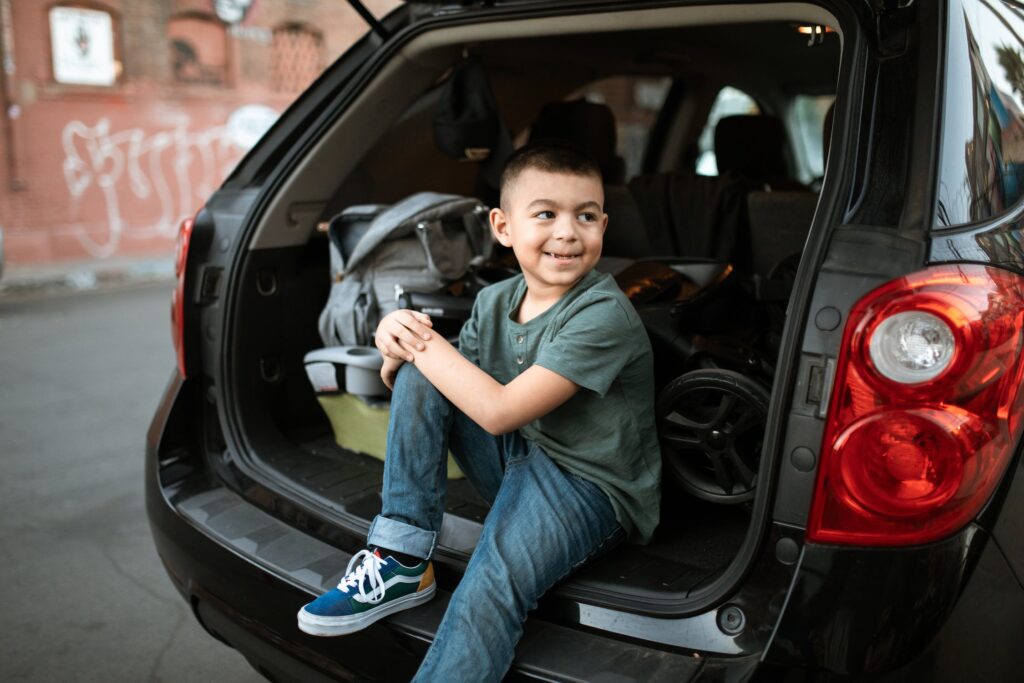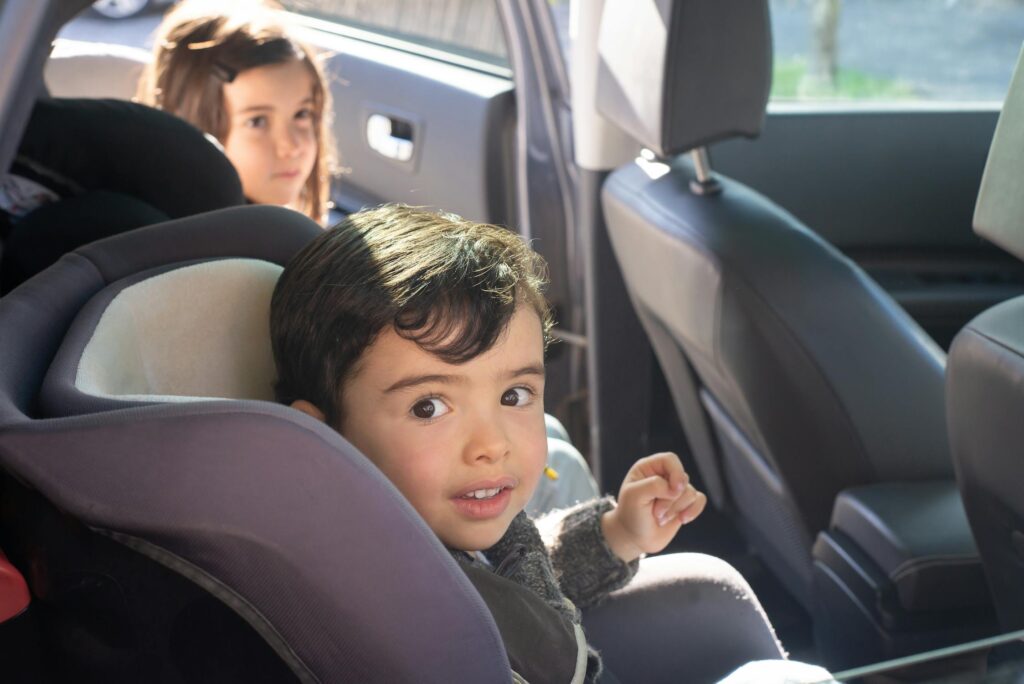Introduction

Long car journeys can be a challenge for any parent, and when your child is on the autism spectrum, it adds an extra layer of consideration. The potential for sensory overload, anxiety, and discomfort can make the prospect of an extended road trip seem daunting. However, with thoughtful planning and a tailored approach, you can create a journey that is not only manageable but also enjoyable for your autistic child. In this comprehensive guide, we’ll delve into four crucial aspects of preparing your autistic child for a lengthy car journey, offering practical tips and insights to ensure a smooth and positive experience.
1.Plan Breaks with Sensitivity

Children on the autism spectrum often have heightened sensitivities to sensory stimuli, making it essential to plan breaks with their unique needs in mind.
Autistic children may find unfamiliar environments overwhelming, and long periods in the car can lead to sensory overload. To mitigate these challenges, consider the following strategies:
a. Sensory-Friendly Stops: Research and identify rest stops or parks along your route that provide a sensory-friendly environment. Look for places with quiet spaces, minimal visual distractions, and natural surroundings. These stops can serve as calming respites during the journey.
b. Timing is Key: Schedule breaks at regular intervals to allow your child to have predictable pauses during the journey. Consider their routine and preferences when planning the timing of breaks. Consistency and predictability can help your child feel more secure.
c. Visual Schedule: Create a visual schedule that outlines the journey and includes planned breaks. Use images or symbols to represent each leg of the trip, helping your child understand and anticipate the breaks. This visual aid provides a clear roadmap of the journey, reducing anxiety.
d. Prepare a Sensory Toolkit: Pack a sensory toolkit with items that can help your child regulate their sensory experiences. This might include noise-canceling headphones, a favorite blanket, or fidget toys. Having these tools readily available can empower your child to manage sensory challenges.
2.Bring Comforting Toys and Entertainment

Ensuring your autistic child has familiar and comforting items during the journey can significantly contribute to their sense of security and well-being.
a. Familiar Toys and Comfort Items: Pack a selection of your child’s favorite toys, blankets, or stuffed animals. Having familiar items on hand can provide a sense of comfort and security in an unfamiliar setting. Consider the tactile preferences of your child and include items with different textures.
b. Portable Sensory Tools: Consider bringing portable sensory tools such as stress balls, textured fidget toys, or chewable necklaces. These tools can help your child self-regulate and manage sensory input. Allow your child to choose the tools they find most soothing.
c. Visual Entertainment: Load up on visual entertainment options that cater to your child’s interests. Bring along their favorite movies, TV shows, or apps on a tablet or portable DVD player. Visual stimulation can be a powerful distraction during the journey.
d. Audiobooks and Music: Introduce your child to the soothing effects of audiobooks or calming music. Create a playlist of their favorite tunes or choose audiobooks that align with their interests. These auditory experiences can provide a comforting and familiar backdrop.
3.Communicate the Plan with Clarity

Clear communication is crucial for children on the autism spectrum. Providing a structured and visual explanation of the journey can help ease anxiety and foster a sense of predictability.
a. Social Stories: Develop a social story that outlines the entire journey, from departure to arrival. Use simple language and visuals to explain the sequence of events and what to expect. Social stories are an effective way to prepare your child for new experiences.
b. Discuss Potential Challenges: Talk to your child about potential challenges they might encounter during the journey, such as noise, unfamiliar environments, or changes in routine. Discuss strategies together for managing these challenges. Encourage your child to express their feelings and concerns.
c. Practice the Journey: If possible, simulate aspects of the journey beforehand. Practice getting in and out of the car, sitting in the car seat, and even taking short drives to familiarize your child with the experience. Repetition can build familiarity and reduce anxiety.
d. Use Visual Cues: Incorporate visual cues and reminders throughout the journey. This can include countdown charts, visual schedules, or a map highlighting the route. Visual cues provide a tangible reference point for your child, enhancing their understanding of the journey’s progression.
4.Prepare for Motion Sickness with Care

Motion sickness can be a common concern for individuals on the autism spectrum. Taking proactive steps to address this issue can make the journey more comfortable for your child.
a. Choose the Right Seat: Position your child in a seat where they have a clear view of the road. Avoid seats that face backward, as this can contribute to motion sickness. Consider testing different seating arrangements before the journey to determine the most comfortable option.
b. Gradual Exposure: If your child has not had much experience with car travel, gradually expose them to shorter rides to acclimate them to the sensation of motion. Start with brief drives and progressively increase the duration as your child becomes more accustomed.
c. Comfortable Seating: Ensure your child’s car seat or booster seat is comfortable and provides adequate support. Consider adding extra cushions or padding for added comfort. Experiment with different seat configurations to find the most comfortable setup.
d. Consult with a Healthcare Professional: Before the journey, consult with your child’s healthcare professional to discuss motion sickness remedies. They can provide guidance on safe and effective options, considering your child’s unique needs. Some over-the-counter or prescription medications may be suitable, but it’s crucial to follow professional advice.
Conclusion
Preparing your autistic child for a long car journey requires a thoughtful and personalized approach. By planning breaks with sensitivity, bringing comforting toys and entertainment, communicating the plan clearly, and addressing potential motion sickness, you can create a travel experience that accommodates your child’s needs and fosters a sense of security. Remember, each child is unique, so adapting these strategies to suit your child’s specific preferences and sensitivities is key to ensuring a smooth and enjoyable journey for the entire family. With careful planning and consideration, you can turn a potentially stressful experience into a positive and memorable adventure for both you and your child. Safe travels!

